The AMD Radeon RX 590 Review, feat. XFX & PowerColor: Polaris Returns (Again)
by Nate Oh on November 15, 2018 9:00 AM ESTMeet The Cards: XFX & PowerColor
As there are no reference cards, for today's launch AMD sampled us the XFX Radeon RX 590 Fatboy. PowerColor also sampled us their RX 590 Red Devil. Both sport modest factory overclocks over the reference 1545MHz boost, and both feature dual BIOS with performance and quiet options. Broadly-speaking, if you're already familiar with PowerColor's Red Devil and XFX's GTS designs for Polaris, then you'll already know what these boards are like.
| Radeon RX 590 Series Cards | ||||||
| XFX RX 590 Fatboy | PowerColor RX 590 Red Devil | Radeon RX 590 (Reference) | Radeon RX 580 (Reference) |
|||
| Boost Clock | 1580MHz | 1576MHz | 1545MHz | 1340MHz | ||
| Memory Clock | 8Gbps | 8Gbps | 8Gbps | 8Gbps | ||
| VRAM | 8GB | 8GB | 8GB | 8GB | ||
| TBP | TBA | TBA | 225W | 185W | ||
| Length | 10.63" | 10" | N/A | N/A | ||
| Width | 2.5 Slot | 2.5 Slot | N/A | N/A | ||
| Cooler Type | Open Air | Open Air | N/A | N/A | ||
| Price | TBA | ~$299? | $279 | $229 | ||
Both of the cards are relatively typical for custom factory overclocked designs, featuring thick heatsinks, dual axial fans, 1x8pin + 1x6pin for power, and the extremely essential presence of LEDs. Right now we don't have a definitive answer on price, but expect them to be in the high $200s to low $300s range where heavily factory-overclocked GTX 1060 6GB cards reside. For the opening launch window, all the partner cards are marked at the $279 SEP.
XFX Radeon RX 590 Fatboy
From the outside, the XFX Radeon RX 590 Fatboy looks to be much of the same with its existing RX 500 and 400 series models. The card's amusing namesake comes from the new heatsink design that XFX is calling the 'Fatboy Unibody VRM Heatsink,' and the company claims the design brings 50% greater heatsink surface area over previous RX 400/500 series cards. So it would seem it's an iteration on the Unibody VRM Heatsink introduced by RX RS and GTR series cards.
As silly as the 'Fatboy' name may be, it seems to have done its marketing job by raising interest, critical or otherwise, and for a subdued Polaris refresh SKU, that extra differentiation can be helpful.
And in terms of 'fatness', the RX 590 Fatboy has the 2.5 slot Double Dissapation style cooler, leading up to a height of 2.09". Thick, but perhaps not as thick as the Red Devil, which stands at 2.24". In any case, the card is neatly clad in an aluminum backplate. Right next to the PCIe power connections is the BIOS dip switch, toggling between Performance and Quiet/Lower RPM.
The display output situation is fairly standard for both cards, with 3 DisplayPorts, 1 HDMI, and 1 DL-DVI-D port.
PowerColor Red Devil Radeon RX 590
For the Red Devil RX 590, the thermal solution doesn't appear unchanged from the RX 580 version, sharing the same dimensions, 4x8mm + 1x6mm heatpipes, 6+1 power phases, and DrMos. At 10" long but 2.24" (57mm) high, the Red Devil RX 590 is a particuarly squat but thick card - just 3mm away from the standard triple-slot width. So prospective buyers should keep that in mind for smaller form factors, occupied neighboring PCIe slots, or chassis airflow management.
While the card has the red Red Devil LED, one of the more easily overlooked features is a small dip switch to disable LEDs. Both BIOS and LED switches are labelled so on the pentagram-emblazoned 1.5mm metal backplate.
Both the XFX Fatboy and PowerColor Red Devil have zero dB fan functionality as well, turning off the fans under certain temperatures and lighter workloads.


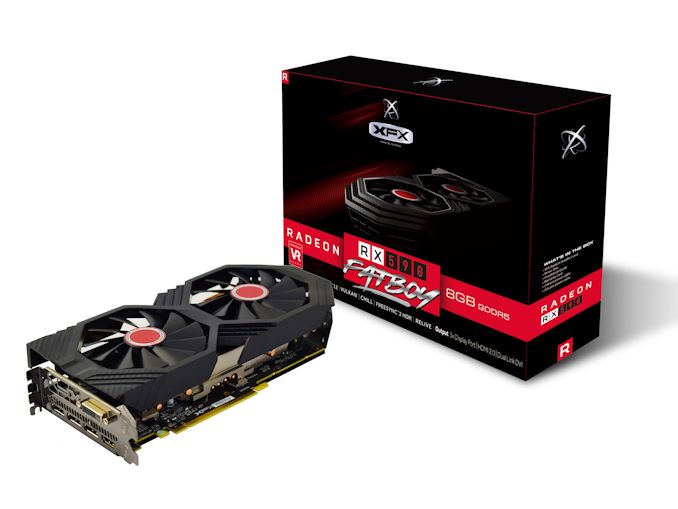
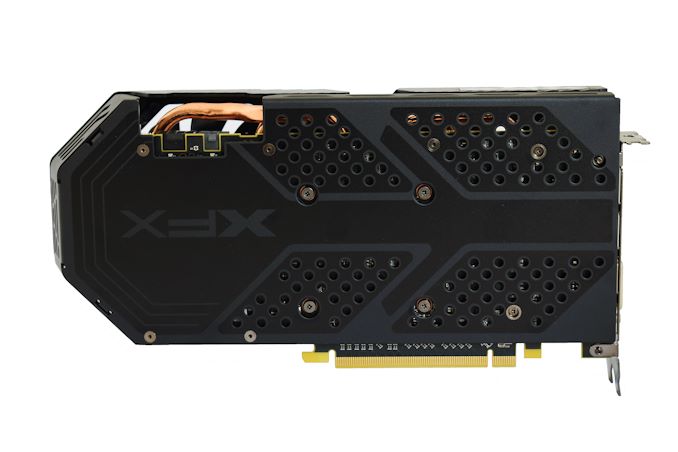
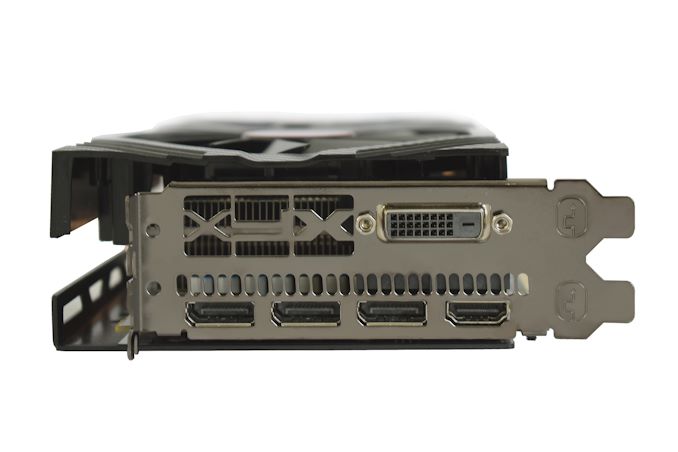
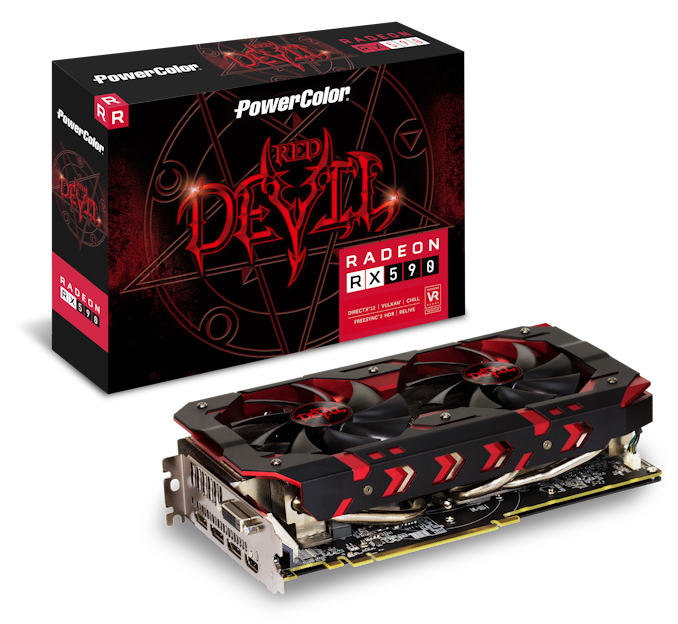
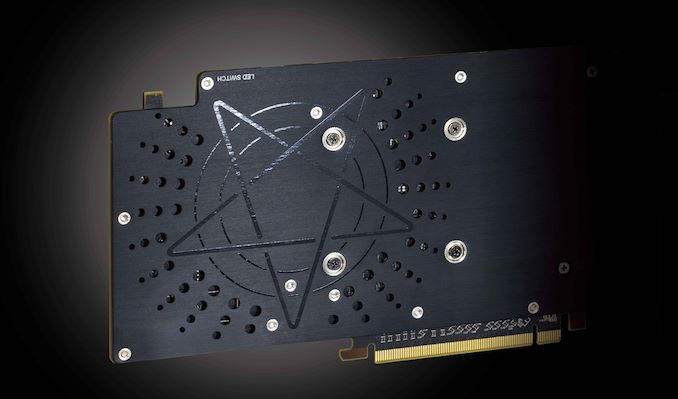








136 Comments
View All Comments
neblogai - Thursday, November 15, 2018 - link
For me, and many other people 2080 or 2080Ti might as well not exist. I'd never buy any GPU priced like that. In fact, I'd never even buy a €300+ card. Also- power use is not an issue- at 200W+, it is easy to cool, not noisy, and savings in electricity cost from having a GTX1060 would be only €5-10 per year (at 20 hour gaming per week, which I do not achieve). And in a sub-€300 market- nVidia has not offered anything for 2.5 years. So it is certainly better deal to buy a faster RX590 and get a €180 AAA game bundle for free, compared to similarly priced, slower GTX1060. There are other reasons as well, like Freesync, and futureproofing like 8GB of VRAM and better driver support (because nVidia will be moving toward doing optimizations for 20xx series).eva02langley - Thursday, November 15, 2018 - link
It is a polaris card. Everybody knew what to expect. I am not sure what you are talking about.Navi is due next year and the contender will be the 2070 RTX. I am going to speculate a tag price of 300$ which is a whole 200-300$ less than a RTX.
mapesdhs - Thursday, November 15, 2018 - link
Xex360, AMD is not trying to compete because just don't buy them, so what's the point? There market and brand awareness simply isn't there to support a high end product stack atm, not until gamers stop being so irrational and actually buy AMD when they are objectively the more sensible option, whether based on price, performance or some combination of metrics.Cooe - Thursday, November 15, 2018 - link
"but now built on GlobalFoundries' 12nm process"Sorry, Nate, but ya got that one wrong. Polaris 30 is being fabbed at TSMC, just like the rest of AMD's GPUs.
eva02langley - Thursday, November 15, 2018 - link
... sure....porcupineLTD - Thursday, November 15, 2018 - link
Where are people getting this from?Ryan Smith - Thursday, November 15, 2018 - link
Note that we currently have no information cooroborating the use of TSMC. And indeed it seems incredibly unlikely given AMD's WSA, and the fact that Polaris 30 has the exact same die size as Polaris 10. TSMC and GF's 12nm processes are not identical, porting a chip to TSMC would given you different geometry dimensions.lmcd - Friday, November 16, 2018 - link
Just like the rest of AMD's...https://www.anandtech.com/show/10446/the-amd-radeo...
GPUs. Right.
maroon1 - Thursday, November 15, 2018 - link
What a jokeOnly 12% faster but also cost and consume more power than RX580 (and 108watt more than GTX 1060 at load)
It adds noting new. It just fills the big gap between RX580 and vega56
dr.denton - Saturday, November 17, 2018 - link
"It adds noting new. It just fills the big gap between RX580 and vega56"Literally all it was ever intended to do. Polaris is a 2 year old mid range GPU design, how do you expect anything revolutionary from that?